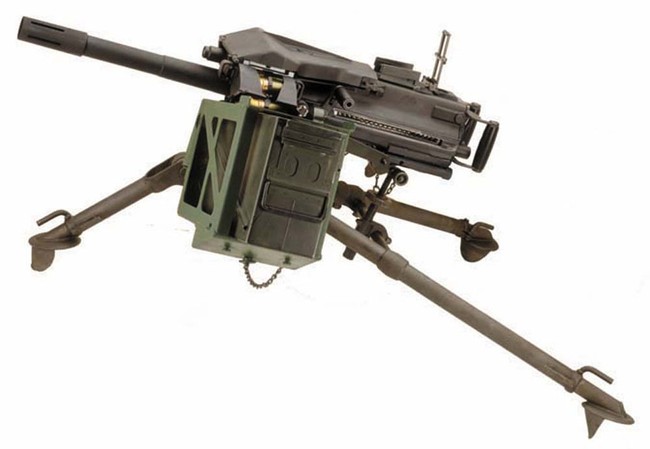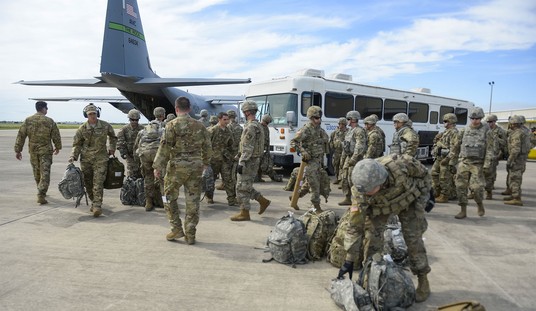Because you shouldn’t have to walk that far to blow someone up.
Grenades are just an awful lot of fun. Well, they are when you’re on the sending rather than the receiving end of them. Many years ago, in Basic Training at Ft. Dix, New Jersey, we were allowed to throw one each standard fragmentation grenade, and we looked forward to that for weeks; the regular old round M67 grenade was easy enough to chuck a good distance and exploded with a short, sharp, satisfying bang.
That is, as long as you were pitching. It would be a lot less pleasant if one were catching.
There was also this thing called a “grenade simulator,” which had all of the bangs with none of the shrapnel. These were used in training exercises and were supposed to be tossed into a “pyro pit,” but one night on a patrolling exercise one bounced off the rim of the pyro pit and landed about ten feet behind me, knocking me over; I have had nothing but tinnitus in my right year ever since, that being over 40 years now.
But that’s not what I wanted to cover, so let’s get back to grenades. We will get to guns eventually; bear with me.
The history
Improvised grenades have been around for some time. The Chinese, during the Song period (960-1279) used gunpowder-filled ceramic and metal containers plugged with fuses. The Chinese called these “thunder crash bombs,” which one has to admit is rather poetic, in a blowing-stuff-up kind of way. The first known use of gunpowder grenades in the West was during the English Civil War when they were used at the Battle of Holt Bridge.
In the American Civil War, the Federal troops used something called a “Ketchum grenade,” which used a striker and a percussion cap to explode the grenade on impact. But standardized grenades, issued and used by major military forces, really came into their own in the 20th century when they were used in the Great War and, by all forces, in the Second World War.
There was just one problem: you had to be close enough to toss the grenade at the bad guys.
Then, in the Great War, came the advent of the rifle grenade. This was the first step towards being able to change a bad guy’s pronouns to “was” and “were” via the personalized application of high explosives from a distance. In the various iterations of this system, one had a specialized fitting on the end of a standard service rifle’s barrel that accepted the grenade; a blank cartridge was then used to yeet the grenade at the enemy. This was how Uncle Sam started the tradition of providing the infantry with a way to tell the enemy “screw you in particular” with explosives, as opposed to calling artillery, which is addressed “To Whom it May Concern.”
While the rifle grenade had some advantages, not least of which was the ability to still use the rifle as a rifle, the American armed forces went in for more specialized hardware and eventually developed dedicated grenade launchers. These took two primary forms: The M79 grenade launcher, a single-shot standalone piece that had a break-open action like a single-shot shotgun; the “Blooper” was essentially just that, a single-shot shotgun that shot specialized 40mm grenades and had the advantage of being simple and reliable. But that required carrying the launcher and a regular rifle, so someone in Ordnance had a rush of brains to the head and came up with the M203 grenade launcher; this is a single-shot launcher using the same 40mm grenades as the M79 but was meant to sling under the barrel of the standard M-16 series rifles, giving double the pleasure, double the fun, for all grunts with bad guys in front of them.
The forerunner
Then, in the early ‘60s, came the Mk 18 – a repeating, hand-cranked piece that was essentially a Gatling gun that shot 40mm grenades. This was a big improvement on the rifle grenade and the M79/M203 systems in one way: It was belt-fed and would bloop out 40mm grenades as fast as the operator could turn the crank. It was reasonably simple and robust, reliable, easy to maintain, and relatively portable.
With this, the problem – how to blow someone up without having to walk very far – was nearly solved. There was just one more issue to address, and it’s something American troops have historically been big fans of – rate of fire. After all, if some is good, more is better, and that applies to bullets, grenades – everything but the enemy. If one is going into combat – for real – one wants to get there the firstest with the mostest.
See Related: Tim Walz Goes Full Metal Stolen Valor in Anti-Gun Rant
Even CNN Torches Tim Walz in Blistering Fact Check About Carrying Weapon 'In War'
The item itself
Then, in 1968, the piece itself was introduced: The ultimate answer to the problem of how far away and how frequently one should be able to blow someone up. Those answers turn out to be 2,400 yards, 375 times per minute, and those are embodied in the Mk 19 40mm grenade launcher. This is a masterpiece of military hardware: A fully automatic arm, a machine gun that burps out 40mm grenades. What more could a serviceman want? Of course, there are a few drawbacks; at 77 pounds, the Mk 19 isn’t all that portable. But when properly mounted on a tripod or the pintle mount on a vehicle, it’s grand. Also, while the cyclic rate of fire may be 375 rounds per minute, loading, barrel heating, and so on limit the piece to a practical 60 rounds per minute. That’s still one round per second of piping-hot freedom launched at America’s enemies.
 This is the finest development of the grenadier’s art so far. One shouldn’t have to walk 2,400 yards to turn a bad guy into a fine pink mist, and with the introduction of the Mk 19, our servicemen could do that without taking a single step. This is one of the best ways to revoke the birth certificates of bad guys that anyone has come up with to date, at least in a form that is reasonably portable by soldiers or Marines. This weapon system has been put to good use since its adoption and is still in use today, turning bad terrorists into good terrorists quickly and efficiently.
This is the finest development of the grenadier’s art so far. One shouldn’t have to walk 2,400 yards to turn a bad guy into a fine pink mist, and with the introduction of the Mk 19, our servicemen could do that without taking a single step. This is one of the best ways to revoke the birth certificates of bad guys that anyone has come up with to date, at least in a form that is reasonably portable by soldiers or Marines. This weapon system has been put to good use since its adoption and is still in use today, turning bad terrorists into good terrorists quickly and efficiently.
The Mk 19 is a great piece. While it won’t find much application in home defense or the game fields, there can be few better ways to put explosives on targets with great expediency and give the taxpayers a bargain in the process; the 40mm grenades being much cheaper than, say, a Ginsu missile.
Now, it’s stretching a point a bit to say the Mk 19 is a “gun,” although it meets the broadest definition; it uses smokeless powder to launch a projectile through a barrel, said projectile traveling in a ballistic arc to its target. The fact that the projectile goes BOOM on impact is immaterial. And besides, what could be cooler than a gun that shoots 40mm grenades – at the rate of 375, or even 60 per minute?
It’s likely the Mk 19 will be around, helping our troops turn bad guys into fine pink mists for many years to come.














